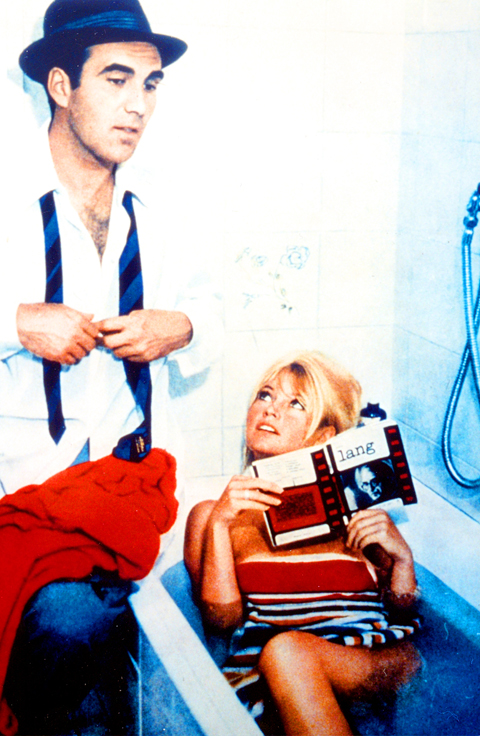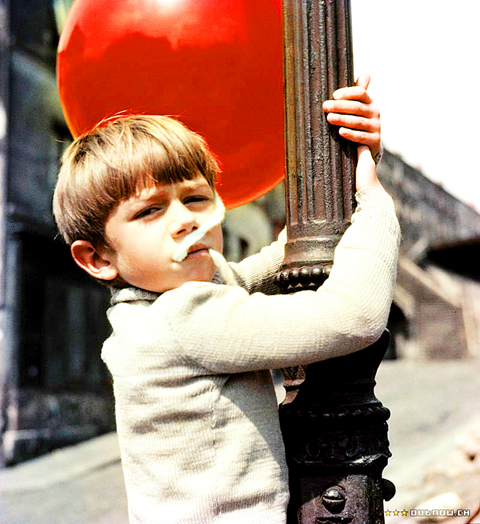Another thoughtfully curated program in the POP Cinema series presented at SPOT - Taipei Film House (光點台北電影主題館) will be launched May 29 and run through June 13. The series, which specializes in showcasing the work of influential filmmakers or exploring cinematic themes, is likely to spark considerable interest with its selection of films about film, an exploration of the uses of media and how cinematic interpretations have changed over the decades.
The current series, titled Films on Film, will open with Taiwanese director Hou Hsiao-hsian's (侯孝賢) Flight of the Red Balloon (紅汽球), which has thematic connections with Albert Lamorisse's 1956 work The Red Balloon, which is also being shown. There is another "cover version" featuring in the festival, a remake of Sidney Lumet's 12 Angry Men (1957) by Russian director Nikita Mikhalkov, which is the closing film of the event. Sadly, the Hollywood original in this case is not being screened, but the idea of similar themes being treated by different directors at different times is firmly established. Although a remake, Mikalkov's feature has garnered some prestigious awards, and has been nominated for Best Foreign Language film at the 2008 Oscars. Hou's film has not been so lucky. While many reviewers have praised its technical mastery, the whole confection seems rather too contrived and self-reflexive to actually say very much. Then again, given the theme of the showcase, the whole point may be in creating a dialog between Lamorisse and Hou, and seeing if Hou really does take us anywhere.
The selection is designed to appeal to a wide audience, though art-house definitely dominates. There is Michelangelo Antonioni's 1966 Blow Out, a spaced-out meditation on the reality of what we see and what we imagine we see, which is said to have influenced a whole series of films about seeing what we want to see including Francis Ford Coppola's The Conversation, Brian De Palma's Blow Out and David Lynch's Blue Velvet. Then there is Isaac Julien's Derek, a cinematic biography of filmmaker Derek Jarman, a combination of interviews, readings and excerpts of footage from Jarman's work, which gives an intimate portrait of one of Britain's great cinematic talents.

PHOTO: COURTESY OF SPOT-TAIPEI FILM HOUSE
Documentaries account for a significant part of the films on offer. It is perhaps more accurate to say documentary-style works, for another current that is apparent in the festival is a study of the power of the media to shape what we believe. This is powerfully presented in films like Dark Side of the Moon, which takes as its departure the story that emerged after Stanley Kubrick's death that the filmmaker had the active support of NASA in creating his film 2001: A Space Odyssey in order to promote its vastly over-budget space program, and weaves a web of speculative history that "hijacks" archival footage and uses it out of context in an exercise of conscious manipulation. Another take on the shuffling up of fact and fiction can be found in Zak Penn's Incident at Loch Ness, which sees filmmaker Werner Herzog playing a version of himself in a film that leaves the viewer eternally unsure if the characters are in on the joke or not. There is much more in the same vein, and a full rundown of films can be found at the festival Web site at www.twfilm.org/film_on_film. While many of the films are far from new, the combination makes for a fascinating study of the forces that our 24-seven media world creates. These are all films to talk about, and the coffee shop and upstairs bar at SPOT will hopefully become the venue for plenty of heated discussion about what it all means.

PHOTO: COURTESY OF SPOT-TAIPEI FILM HOUSE

PHOTO: COURTESY OF SPOT-TAIPEI FILM HOUSE

Following the shock complete failure of all the recall votes against Chinese Nationalist Party (KMT) lawmakers on July 26, pan-blue supporters and the Chinese Communist Party (CCP) were giddy with victory. A notable exception was KMT Chairman Eric Chu (朱立倫), who knew better. At a press conference on July 29, he bowed deeply in gratitude to the voters and said the recalls were “not about which party won or lost, but were a great victory for the Taiwanese voters.” The entire recall process was a disaster for both the KMT and the Democratic Progressive Party (DPP). The only bright spot for

Aug. 11 to Aug. 17 Those who never heard of architect Hsiu Tse-lan (修澤蘭) must have seen her work — on the reverse of the NT$100 bill is the Yangmingshan Zhongshan Hall (陽明山中山樓). Then-president Chiang Kai-shek (蔣介石) reportedly hand-picked her for the job and gave her just 13 months to complete it in time for the centennial of Republic of China founder Sun Yat-sen’s birth on Nov. 12, 1966. Another landmark project is Garden City (花園新城) in New Taipei City’s Sindian District (新店) — Taiwan’s first mountainside planned community, which Hsiu initiated in 1968. She was involved in every stage, from selecting

As last month dawned, the Democratic Progressive Party (DPP) was in a good position. The recall campaigns had strong momentum, polling showed many Chinese Nationalist Party (KMT) lawmakers at risk of recall and even the KMT was bracing for losing seats while facing a tsunami of voter fraud investigations. Polling pointed to some of the recalls being a lock for victory. Though in most districts the majority was against recalling their lawmaker, among voters “definitely” planning to vote, there were double-digit margins in favor of recall in at least five districts, with three districts near or above 20 percent in

The great number of islands that make up the Penghu archipelago make it a fascinating place to come back and explore again and again. On your next trip to Penghu, why not get off the beaten path and explore a lesser-traveled outlying island? Jibei Island (吉貝嶼) in Baisha Township (白沙鄉) is a popular destination for its long white sand beach and water activities. However, three other permanently inhabited islands in the township put a unique spin on the traditional Penghu charm, making them great destinations for the curious tourist: Yuanbeiyu (員貝嶼), Niaoyu (鳥嶼) and Dacangyu (大倉嶼). YUANBEIYU Citou Wharf (岐頭碼頭) connects the mainland